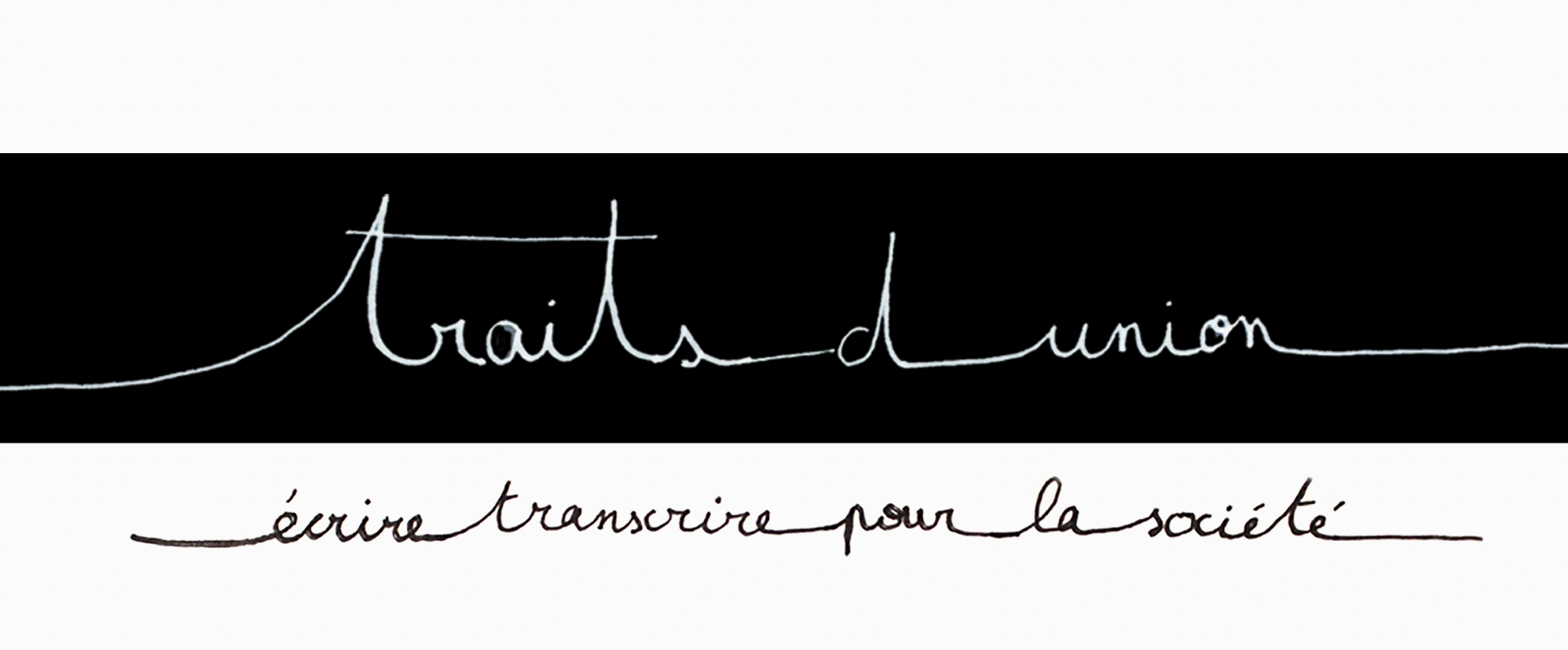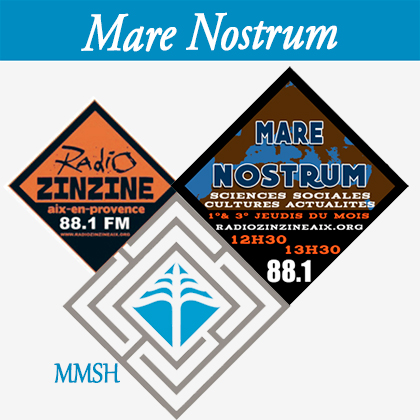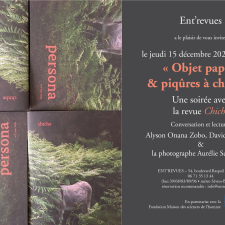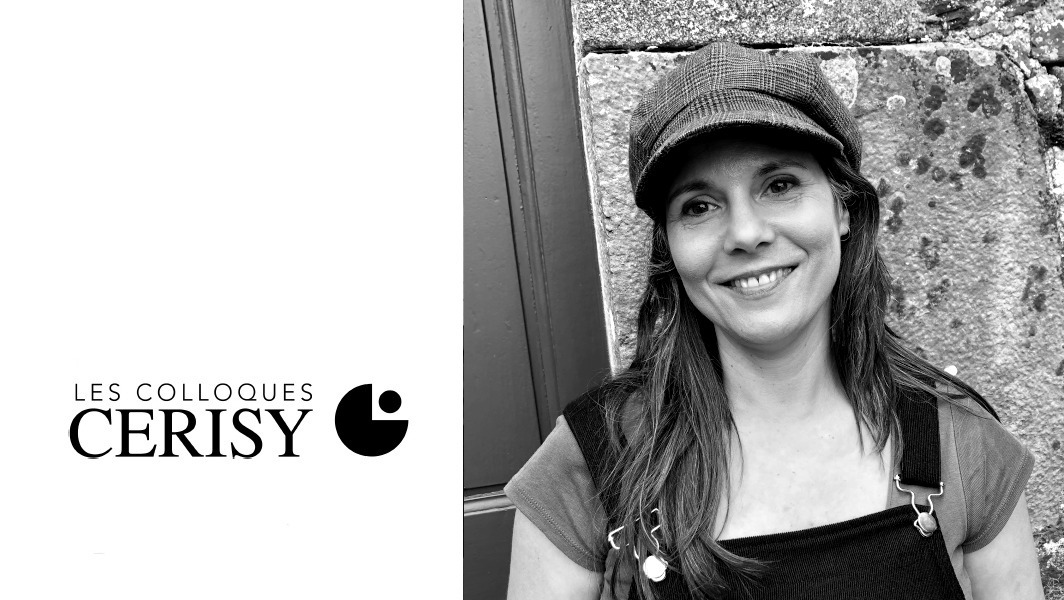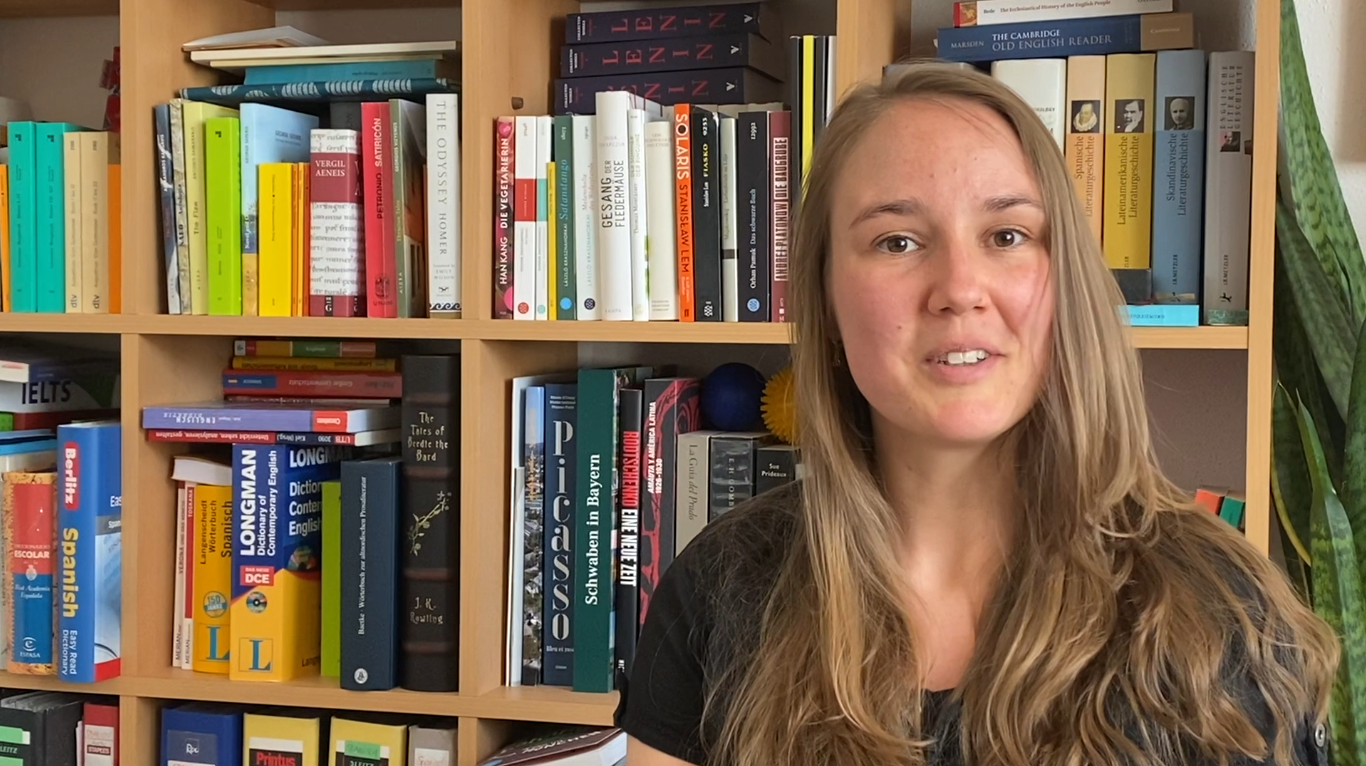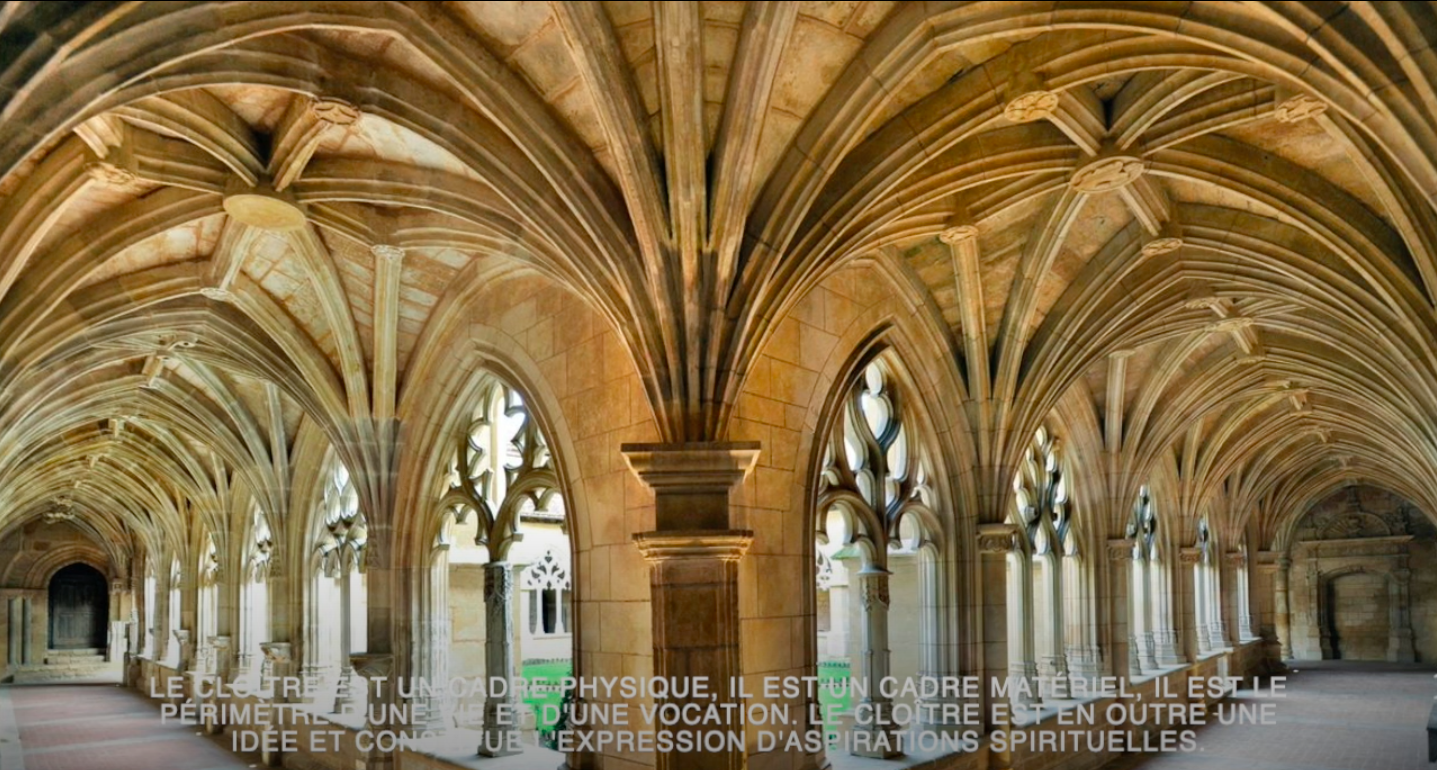Notice
Maison Suger
Benjamin Sass - The Semitic alphabet (podcast)
- document 1 document 2 document 3
- niveau 1 niveau 2 niveau 3
Descriptif
Retrouvez la transcription intégrale dans l'onglet documentation complémentaire.
The Semitic alphabet.
The alphabet versus the pre-alphabetic scripts
The alphabet – its creators, birthplace, and birth-date
The first alphabet – its structure, linguistic attribution and role
The letterforms – from pictographic to linear
The letterforms – from linear to cursive
Benjamin Sass (1948) studied archaeology at the universities of Jerusalem and Tel Aviv, and he is emeritus professor of Tel Aviv University. In the 1970s, in the Sinai, he discovered two of the earliest alphabetic inscriptions known, incised on the rock face of an ancient mine. This finding won him over to the study of the early alphabet.
Inter alia Sass has written extensively on various aspects of the Semitic and Greek alphabets (https://telaviv.academia.edu/BenjaminSass).
Often in Paris (whenever possible staying at the Maison Suger), he is collaborating with colleagues at the Collège de France and the UMR 8167 of the CNRS.
Literature for the podcast
Pp. 89–90 in…
Thème
Documentation
TRANSCRIPTION
My name is Benjamin Sass. I was born in Jerusalem in 1948. I studied archaeology at the Universities of Jerusalem and Tel Aviv, and I am now Emeritus Professor of Archaeology at Tel Aviv University. In the 1970s, in the Sinai, I discovered two of the earliest alphabetic inscriptions known, incised on the rock face of an ancient mine. This finding won me definitely over to the study of the early alphabet.
An alphabetic writing system has a letter for each sound of the language, which means usually not more than 30 letters. This is a very economic system. And the alphabet, the Semitic alphabet was invented in the second millennium. It has been preceded since the fourth millennium B.C. by the scripts of Mesopotamia and Egypt. The cuneiform of Mesopotamia and the hieroglyphs of Egypt, which we all know, or know how they look. And in the jargon of the specialists, these scripts are called logosyllabic, which means a combination of word signs and syllable signs. Syllable, a consonant and a vowel. These are the earliest writing systems ever, fourth millennium B.C., and the researchers call them for this reason pristine. When the alphabet was invented, there were already other writing systems; pre-alphabetic, non-alphabetic. And so, the alphabet is not pristine. Cuneiform, according to the archaeological evidence, seems to be earlier than Egyptian hieroglyphs, which brings me and others to the idea that when the Egyptians devised the hieroglyphs, they were aware of the cuneiform and took the idea from Babylonia. So that the invention of writing (tout court) is probably rather to be attributed to Mesopotamia and not to Egypt, which was a century or two later, perhaps, according to the existing evidence. And so, this brings us to the idea that the syllable was the basic unit of speech and probably also of writing in the early period. A syllable consonant and vowel and not alphabetic consonant or vowel each separately, which is quite surprising because a syllabic script may have 200 or 300 signs and the alphabet has a few dozen, about 30. So why didn't the people look for economy in the writing system? Well, they didn't. And if we look at Chinese today, we see it's very much in evidence. There's also another testimony to the preference of humanity to a syllabic script. Ethiopia and India, when they adopted the writing system in the first millennium B.C., they took an alphabet from their neighbours, each from a different neighbour. And after some time, they changed this alphabet back into the syllabic script. So now, they have 200 or 300 signs each. So what is sure that the alphabet came into being in the second millennium B.C. This means about two millennia after the cuneiform and the hieroglyphs. What is known for certain that it was devised by Canaanites or by people that are called in the scholarly research West Semites, meaning speakers of a Semitic language of the West, of the Levant more or less, like Phoenician, like Hebrew, etc. The archaeological data on the birth place and birth date, on the contrary, are insufficient. There are two possibilities for the birth date and two possibilities for a birth place. The earliest evidence is meagre. There are circa 20 inscriptions written in pictographic letters discovered by the British Egyptologist Flinders Petrie in 1905 in Serabit el-Khadim in the Sinai. Later they were called in scholarly circles the Proto-Sinaitic inscriptions. These 20 inscriptions are mostly incised on the rock of mines in the Serabit el-Khadim region, turquoise mines. This was the place where the Pharaohs extracted the turquoise, some of which you see probably on the jewelry of Tutankhamun, for example. In the few stone statuettes, it also existed incised inscriptions found within an adjacent temple dedicated to the goddess Hathor or Hathōr, who among her other titles is also Lady of Turquoise. Petrie noticed immediately, with the shapes of the letters, are borrowed from Egyptian hieroglyphs, which is logical because you have hieroglyphic inscriptions at Serabit el-Khadim all over the place. But the script is not Egyptian, neither of the script nor the language because there are fewer than 30 different signs or letters, Petrie very logically concluded that he discovered an alphabet. But as we said, there is no clear cut dating evidence at the Serabit el-Khadim Temple or in the 20 inscriptions that were found in two centuries, possibly of the second millennium, either the 19th century or the 13th century. Several of my colleagues give definite answers to this, I prefer to leave the question open. I don't think the evidence justifies a definite answer. Two more inscriptions in a similar script were discovered in Egypt itself on the rock, incised on the rock of a resting place of caravans in a place called Wadi el-Hol, which is not very far from Luxor. And these two inscriptions have no direct dating evidence either, they are incised in the rock, and they are accompanied by inscriptions from various periods. There is no dating. Then in Palestine, two or three brief pictographic inscriptions were uncovered also. But either the dating or the alphabetic attribution is problematic. So we know that these inscriptions are… the first, those discovered in Sinai, are Semitic, but we are not sure about the date and we are not sure whether the alphabet was invented in Egypt, Sinai or perhaps Palestine, according to the two, three brief inscriptions that I just mentioned. There's very, very little evidence and everyone tries to generalise from one example to go out into theories. It's not very easy. Now I want to tell you about the first alphabet, its structure, its linguistic attribution and role in writing, in human writing in general. In 1916, the British Egyptologist, Alan Gardiner, made an effort to decipher the inscriptions from Sinai, from Serabit el-Khadim. And he had this stroke of genius, if I may so put it. He noticed a repetitive sequence of four letters, repetitive, that is repeated at least five times, if not more, and had two guesses about it. First, he noticed a certain resemblance of the forms of the letters to later Hebrew and Phoenician inscriptions, which were already known in 1916, in his time. And so, he made an educated guess as to what these four letters were. And second, which helped him with this guess, was that he knew from much later documentation at Byblos City on the Lebanese coast that the goddess of that city, who was called Baʻalat, a feminine form of the Canaanite Baʽal, it was called in Egyptian (inaudible). So, voilà, he made the discovery. I think he must have got up and danced the little around the table. And he never spoke about the excitement. But there must have been an excitement. And so, Ba'alat, when we write Ba'alat, we have six letters. But in the Semitic languages that record only the consonants, not the vowels. And in this, they also imitate Egyptian, there are only consonants. The vowels were reconstructed by the readers who knew the language and could fill in the missing vowels. Not a very good system, which was corrected by the Greeks who invented the vowels. What Gardiner found that if he's right about the alphabetic nature of the Proto-Sinaitic inscriptions and it is alphabetic, that this must be the earliest alphabet ever. But we have the problem of the dating, as we said. And also that the letter shapes were borrowed from Egyptian hieroglyphs. But the phonetics were Semitic. So what was borrowed was only the shape of the letter without the Egyptian sound that goes with it. The four Semitic letters are bēt for B, ayin for the sound that is (ayin) in Semitic, and then lāmed for L and tāw for T. And this remains the only deciphered word in the proto-Sinaitic inscriptions after more than a hundred years. There are few other attempts, and there are, of course, colleagues who decipher everything. But I don't trust them. All the same, this one single word speaks volumes for the history of writing. First of all, we know for sure it's an alphabet. And it's the first alphabet in the world, and it's Semitic. All alphabets -not only the Semitic ones- are later. And the ancestors of this one alphabet… Nowhere else was the alphabet invented again independently. You can look around and think of I don't know how many alphabets you know: all go back or are imitations or influenced by the proto-Sinaitic inscriptions. Back to the four Balaat letters. The names are the same today. And this is a lucky coincidence that the names of the letters were not changed. They were much helpful to Gardiner in his idea of a genius. So, bēt. The first letter is a square, which is called bēt because it resembles a house: in Semitic languages it's (bite) or bayt. The second letter is an ayin, which means an eye. And so on. So, Gardiner was, of course, a genius, but he was also lucky. So far for the proto-Sinaitic.
These proto-Sinaitic letters are called pictographic because, like the Egyptian hieroglyphs, they are pictures. You have the image of an eye for the letter ayin. The image of the house is very schematic for the letter bēt, which is the house. And the letter (R, rēs), which means head, so it's a picture of a human head. And then, when we arrive in Palestine in the 13th century, the alphabet reappears in Palestine in excavations, in some good archaeological contexts, which for Sinai we do not have. And it was observed that, in the meantime, the alphabet underwent something that they call linearisation, which means that the pictographs became less pictographic, more linear, which probably could indicate a more frequent and heavy use. I'm not sure of it, but it's a possibility. And nowhere is the transition from pictographs to linear documented. We do not have any inscription which is half and half or shows the transition. It's all very mysterious. Also, when the alphabet appears in Palestine, it disappears from Egypt, which is also a mystery. No one knows how or why. And surely what hinders us from understanding is the very, very small documentation, almost nothing at all. In Palestine of the 13th-12th century, there are perhaps six or seven linear alphabetic inscriptions, which -because they come from Palestine and not from Sinai- were called by the scholars the proto-Canaanite inscriptions. All of these inscriptions -or, let us say differently, the distribution of these inscriptions is very distinct. They appear in the southwestern region of Palestine, that was, at the time of the 13th century, ruled by Egypt directly. And the reason why the Canaanite alphabet moved from Egypt to Canaan needs no great explanation, because those Canaanites were writing their own language, not Egyptian, in this alphabet. And this language did not have any script before. It was only oral. But why then? Perhaps because the Egyptians ruled. So I don't know. I cannot say. Anyway, most of the inscriptions come from an ancient site called Lachish, also a biblical set, which was the greatest Canaanite center in the southwest of Palestine, and a counterpart of sorts to the Egyptian center that was in Gaza, some 30 kilometers to the West. Another subject which we will not treat today is the Cuneiform (guys), which is the alphabet acquired in the northern and central Levant. And most importantly, Ugarit is an important city on the northern coast of the Levant, today near the Turkish-Syrian border. About this we will not speak today.
The letter forms, as we said in the 13th-12th century, were linear and subsequently they developed to become cursive, which means streamlined. In the 12th century, the Egyptians leave southwestern Palestine and Egypt concentrates on itself. It leaves their possessions abroad. It becomes weaker. Yet the alphabet remains in Palestine. The 11th-10th centuries are a period of decline everywhere in the Levant. That's because of the decline that occurred after the thriving culture of the late Bronze Age in the 12th century, which comes to an end almost everywhere. And as a result, in the 11th-10th centuries there are almost no alphabetic texts. There is then a revival around or towards 900 BC, when the political structures in the entire Levant start to recover and numerous kingdoms are established from the Northern Levant, from the borders of Turkey, to the south of Palestine. And new kingdoms have new administrations. Administrations have chancelleries, locales of writing. And this becomes apparent in the shapes of the alphabetic letters. Suddenly, around 900, the alphabet becomes cursive. That means, in other words -if I can say so-, streamlined. And this is not incidental. This may show us that there was a great leap forward in the use of writing, presumably with ink on papyrus or parchment. In the 12th century, the Egyptians leave the so-called colonies in the Levant. But the Canaanites, the indigenous people, remain and the alphabet remains in this region. The Egyptians did not leave in the 12th century in a vacuum because all over the Levant it was a period of decline, of the destruction of the late Bronze Age culture, in most of the Levant, with a few exceptions. And then, in the 11-10th centuries comes a period of decline with almost no alphabetic (takes) at all. A revival comes toward 900, when the political structures recover. And the alphabet, about 900, spreads to the entire Levant. Until then, it was limited to southwestern Palestine, its original distribution. At the same time, the alphabet becomes cursive or streamlined, which means speeding up writing, and which also means writing in ink, on papyrus and in parchment. The refoundation of numerous kingdoms after the fall of the 12th century about 900 must have brought with it a surge of documents written in these Royal Chancelleries. Let me end by asserting that no papyrus or parchment of the 9th-8th centuries B.C. survived in the Levantine climate. Yet this stationery can reasonably be inferred from a few cursive inscriptions of the period incised on jars, from a few ink inscriptions on whitewashed walls -inscriptions that imitate books that are written in columns- and from bullae, which some of us may not know what they are. These are clay lamps bearing papyrus impressions and string impressions used to seal documents of papyrus and parchment. If there's one question or perhaps two questions that I'd like most to have the answer to, this is the birthdate and birthplace of the alphabet. And perhaps also the manner the alphabet migrated, if I may use such a heavy word, from Egypt to Palestine. It closes again in the puzzle. The puzzle has, so to speak, an importance of its own for me, for my passion of the alphabet. I always say that my work is games for adult children. In the humanities, there is no practical use apart from the very human desire to broaden our knowledge. It is useful for the soul.
Sur le même thème
-
Retour sur la journée Traits d'union du 19/09/2025 "écrire, transcrire pour la société"
BergèreMarcFrangnePierre-HenryGuillotAgatheQuéréAnnaRuelleCharlesSchuweyChristopheQuelles formes, quelles médiations, quels intermédiaires permettent aux chercheuses et chercheurs en arts, lettres, langues, sciences humaines et sociales de tracer des traits d'union entre recherche
-
Les femmes de la noblesse du sud de la France et l’écriture
CaparosCamilleÀ l’époque moderne commencent à apparaître des documents écrits par les femmes. Jusque-là, cette pratique était peu courante soit à cause d’une éducation peu encouragée, voire absente soit à cause d
-
A la page - RCI - Présentation de Brain It Out et du Festival en Pays Rêvé
LefrançoisFrédéricAugustinAudreyLavenairePascaleLazloViktorCatalanLindsayA la page - RCI - Présentation de Brain It Out et du Festival en Pays Rêvé
-
ENT'REVUES : « Objet papier et piqûres à cheval »
Onana ZoboAlysonBonnandDavidScouarnecAurélieEnt’revues vous invite à une soirée avec la revue Chiche. Conversations et lectures autour du numéro « Persona ».
-
"Gazelle théorie", une expérience d'écriture rebelle
En interrogeant l'espace vide entre "écrits" et "rebelles", Orchani propose un retour à l'expérience d'écriture rebelle. En tant que chercheuse, mais aussi en tant qu'écrivain, elle s'essaie ici à une
-
Causalité, temporalité et hasard dans les fictions des Amériques: fragments de révoltes narratives
Depuis peu, dans les Amériques, on assiste à une floraison de "romans de la rencontre", qui tendent à supplanter les romans à suspense cherchant un coupable à exclure en réactivant le paradigme
-
La fabrique du terrain : Laurent Demanze
DemanzeLaurentLaurent Demanze, chercheur en littérature contemporaine, dresse le portrait de l’écrivain en enquêteur. Il ne s’agit plus de « représenter le réel, mais d’interroger les conditions de sa fabrique ».
-
Écrire, traduire, dans l'entre-deux des langues
KaplanLesliePinhas-DelpuechRosieCette seconde conférence du cycle « Littératures en mouvement... » s'intéressera à la façon dont l'écriture et la traduction peuvent dialoguer entre elles.
-
It is time to meet
DebiaisVincentVidéo de présentation des participants aux Rencontres internationales d’épigraphie médiévale (Roda de Isábena, 15-19 septembre 2021) Après des semaines d’incertitude quant à la tenue des premières
-
Webinaire #5 : Ecrire un dossier de film
FerlitaCélinePrésentation des éléments à rédiger pour un dossier de film (scénario, lettre d'intention, résumé...)
-
Espace claustral et écriture
DebiaisVincentBoto VarelaGerardoVidéo #4 de présentation des Rencontres internationales d’épigraphie médiévale (Roda de Isábena, 15-19 septembre 2021) Gerardo Boto Varela (Université de Gérone) est le coordinateur de plusieurs
-
Écrire sur l’œuvre d’art au Moyen Âge
DebiaisVincentVillanoMariaVidéo #3 de présentation des Rencontres internationales d’épigraphie médiévale (Roda de Isábena, 15-19 septembre 2021) María Villano (Université de Vérone) est historienne de l’art et spécialiste des



